Mysteries of the Far North
St. Petersburg
Last modified:
The program for our first day included a trip to Peterhof, also known as the Summer Palace. When Peter I visited Versailles, he decided that Russia needed an equivalent showplace.
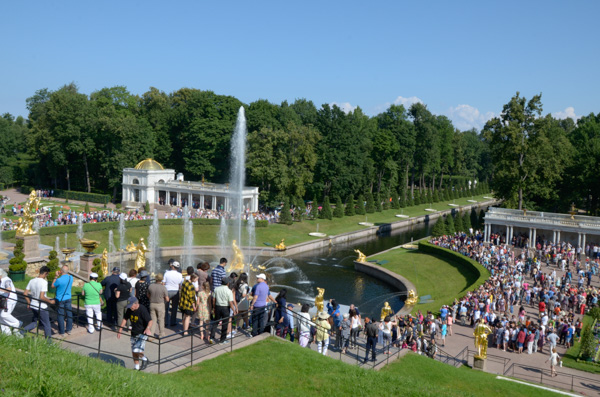
The palace is extremely popular.
Peter was taken by the fountains and gardens at Versailles. The extensive fountains at Peterhof are all gravity fed from the Neva River.
The canal enabled foreign ambassadors to come calling directly from their ships.
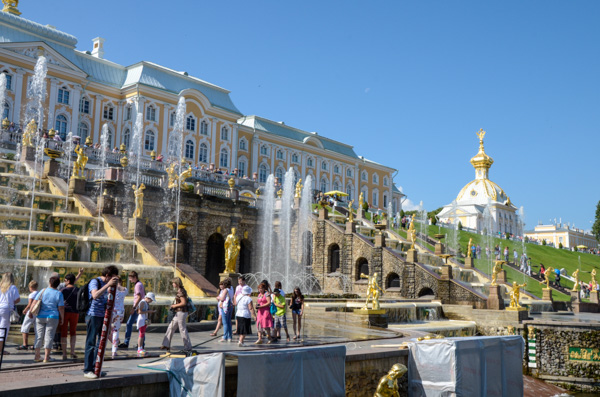
The main palace was enormous. Pictures were not permitted inside, but sumptuous doesn't begin to describe it.
Most of it is a reconstruction. The German army used the palace as a headquarters during the brutal Siege of Leningrad. They systematically destroyed it when they left.
Most of the art had been removed for safekeeping before the invasion and it has been returned to the rebuilt structures. The fountains and statuary were reconstructed from archival photos.
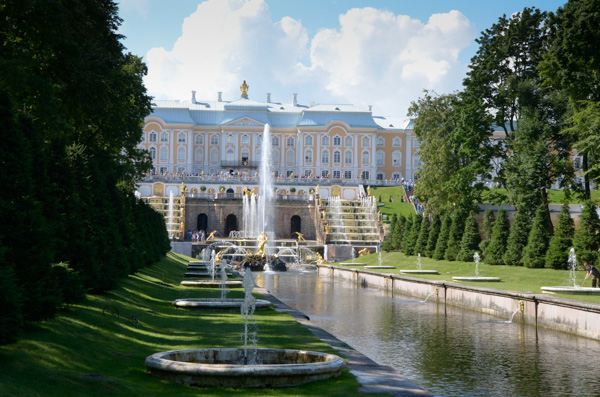
This is the route that foreign dignitaries used in Peter's day.
The palace was much enlarged and redecorated during the time of Catherine the Great, who did not share Peter's underlying love of simplicity.
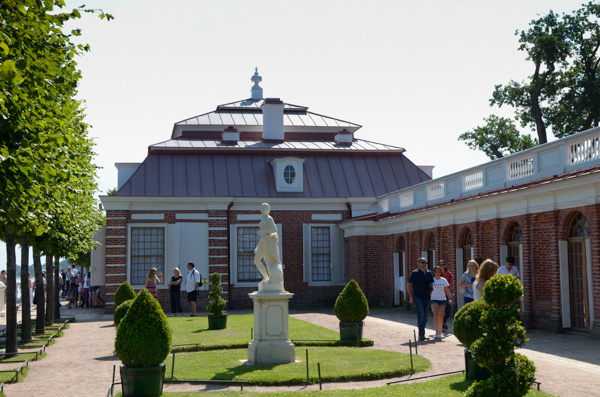
Located much closer to the water was the palace of Monplaisir, Peter's personal residence. It is much more intimate, but we were unable to go inside.
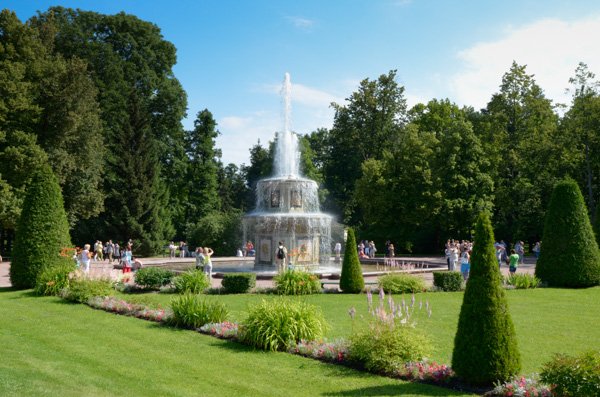
Not being a particular enthusiast of baroque architecture and interior design, I found the gardens the most appealing part of Peterhof.
The numerous and varied fountains enhanced the experience.
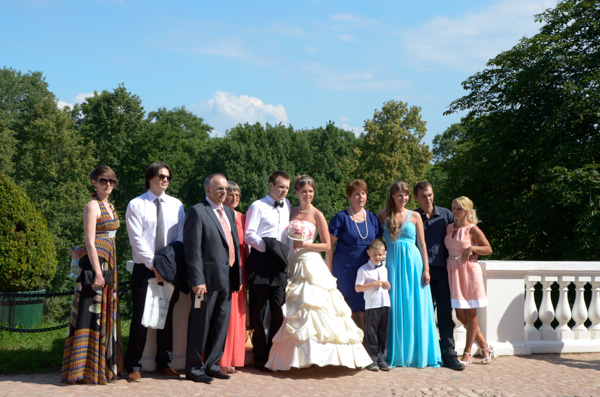
Weddings became quite a theme in our journey through Russia. Almost every place we visited had some kind of wedding party.
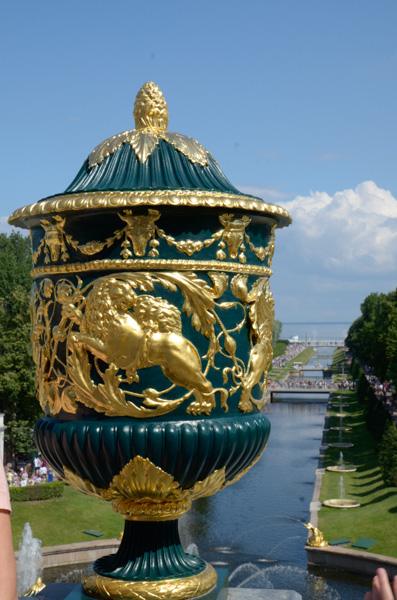
The view down the canal to the Gulf of Finland.
After our tour of the palace and grounds we braved the kiosks of souvenir vendors and searched out our bus among the crowd in the parking lot. Lunch was at a nearby venue that catered to tourist groups. Our group of 24 was one of several, but the food was good so we didn't complain.
One unusual feature of our Russian tour was that we didn't have a single meal on our own. All of the meals during the land portion were arranged and once we embarked for the main portion of the trip, the meals were on the ship. The meals were consistently decent, but we missed the adventure. Likewise there was little free time for individual exploration.
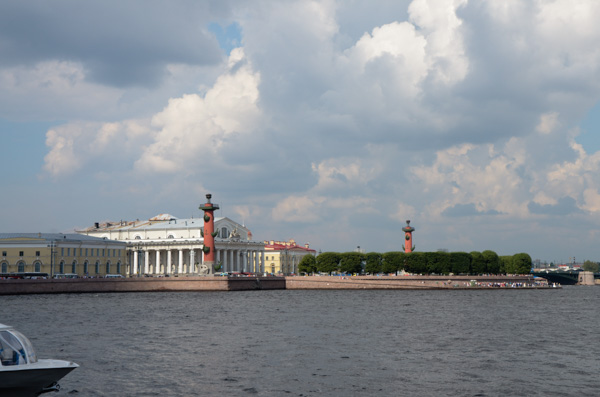
After lunch we returned to the city for a bus tour.
Vasilyevsky Island is across the Neva River from the Hermitage Museum, the Admiralty and our hotel.
This area, called the Spit, is the location of the former Stock Exchange
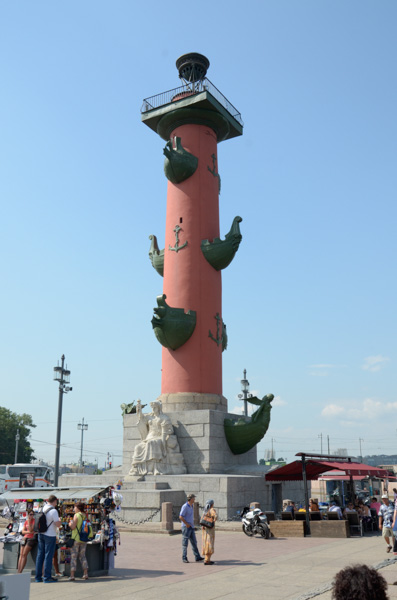
These odd looking structures are rostral columns. They are modeled after Roman victory columns that displayed the prows of captured ships. Beacons on top of the columns are lit for special occasions.
There were, of course, several wedding parties.
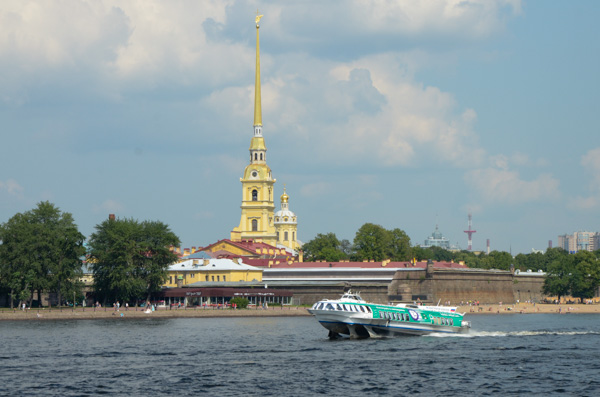
Nearby is the Peter & Paul Fortress. It was the first construction in Peter the Great's new capital. We did not visit on this trip, but we did on a subsequent excursion on the Baltic Sea.
The "beach" was very popular on this balmy afternoon.
We will encounter hydrofoils later in our trip.
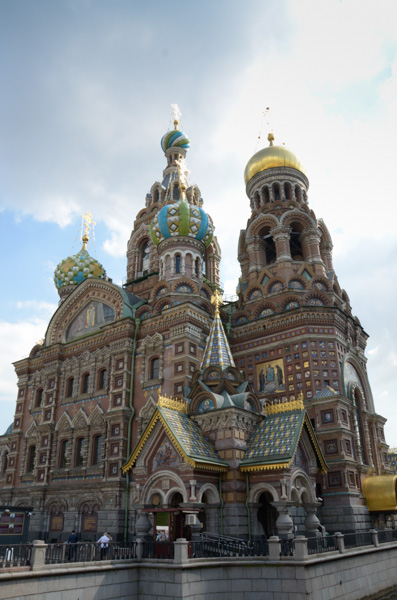
This classic Russian church is the Resurrection of Christ church, but its common name is the Church of our Savior on Spilled Blood. It is on the spot where Tsar Alexander II was assassinated.
Ironically Alexander was a notable reformer. One of his major accomplishments was freeing the serfs. On the day of his assassination he had authorized a constitutional commission. Had he lived, the Russian Revolution may not have happened.
After his death Alexander III repudiated any constitutional leanings. He signaled his traditional preferences by building this über-Russian church in the midst of a city that Peter the Great and his successors had worked to construct according to European notions.
Baby steps toward freedom have stopped.
We didn't have time to go inside. on this trip, but we did visit later as part of our Baltic adventure noted above.
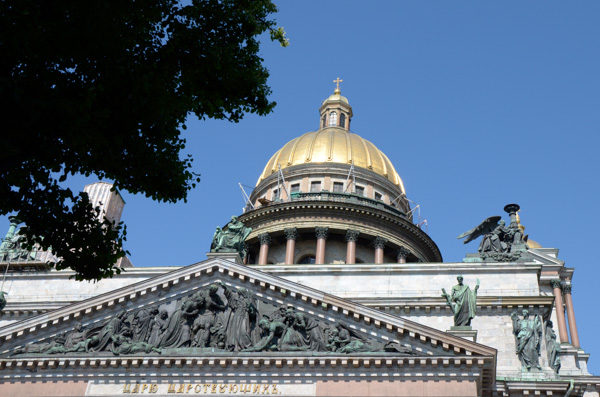
We did visit St. Isaacs cathedral adjacent to the hotel.
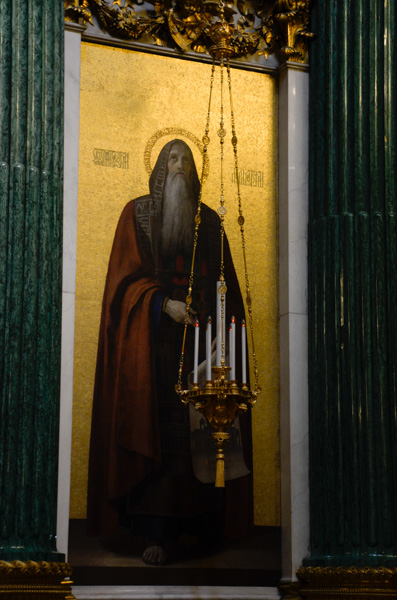
This mosaic image of St. Isaac is part of the iconostasis. The original icons were removed after the Russian revolution and the cathedral was turned into a museum of atheism!
Since the collapse of the Soviet Union, the restored building is used for special religious services. Its primary function is again as a museum -- but no longer of atheism.
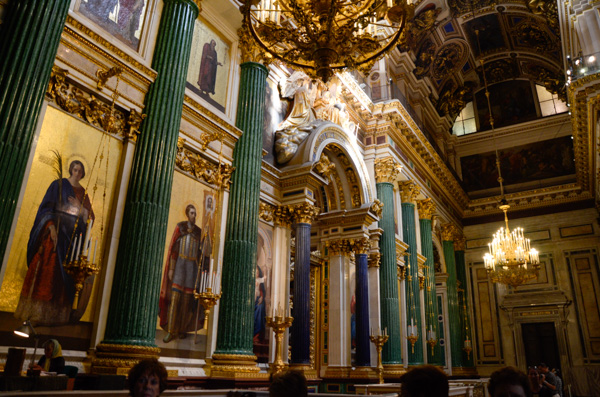 The iconostasis
comprises mosaics and columns made of
malachite and lapis lazuli.
The iconostasis
comprises mosaics and columns made of
malachite and lapis lazuli.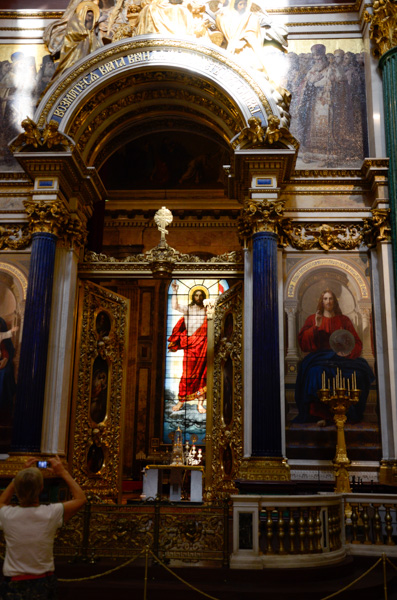
The altar behind the iconostasis contains a stained glass figure of Christ.
The symbolism of the iconostasis is complex and varies from region to region. Although it appears that it is a "wall" that separates the altar from the believers, in fact it is considered to link them.
This was our final tour stop for the day. The following day we visited the Hermitage in the morning and then departed for our long bus ride to Karelia.
Click your "back" button to return.